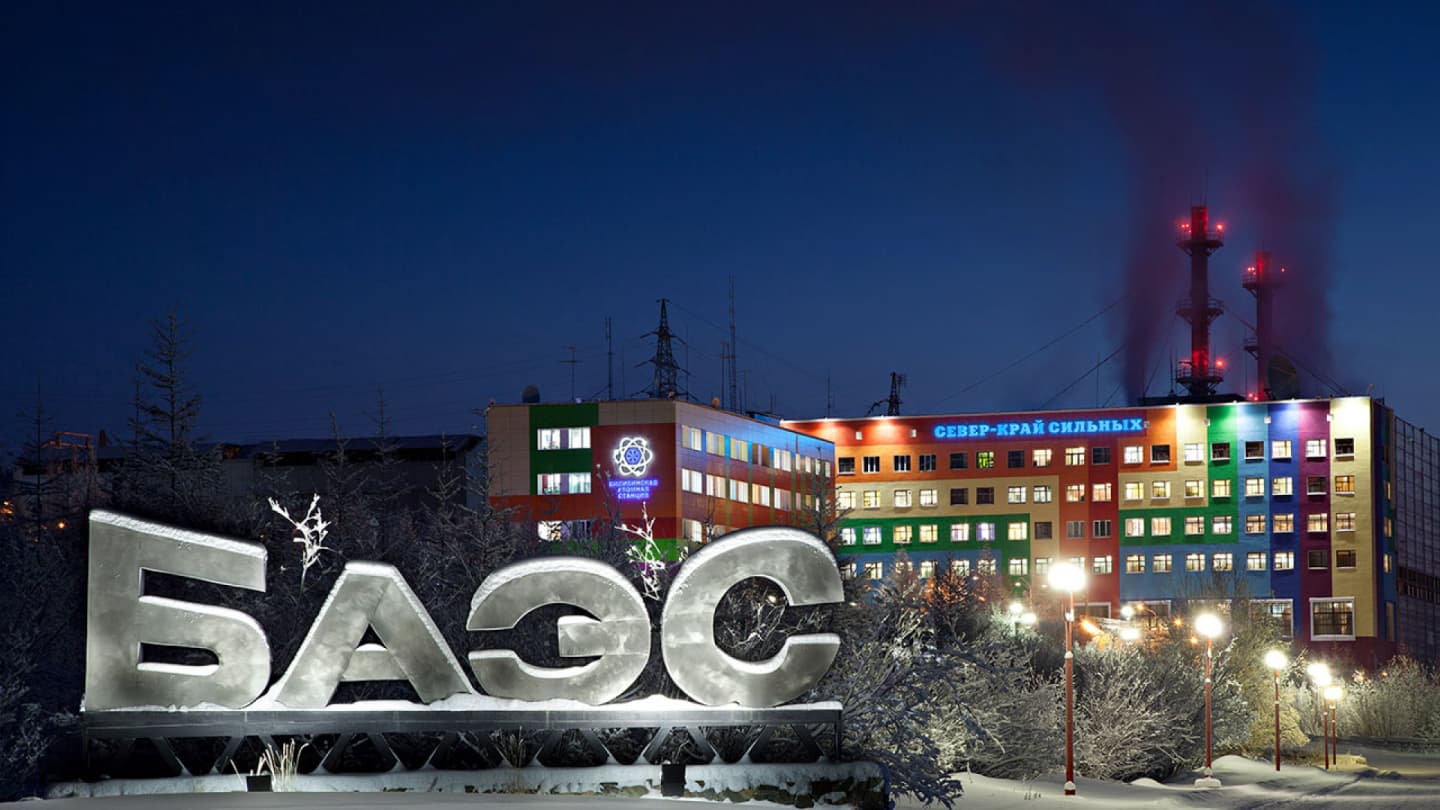Bilibino NPP consists of 4 power units with EGP-6 reactor units (pressure-tube uranium-graphite units).
The NPP reactor unit is comprised of the following: a reactor; a natural coolant circulation circuit with a protection and control system; a (reactor) control and protection system circuit; a gas circuit; a maintenance cooldown system; an emergency cooling water supply system (ECWSS).
The process flow chart of Bilibino NPP units belongs to the single-loop type. The controllable chain reaction occurs in the reactor core: fuel (uranium dioxide U235) shares its thermal neutrons.
Heat is removed by water circulating through fuel channels along the natural circulation circuit. The steam-water mixture flows from the reactor to the drum separator, where it is separated into steam and water. Dry saturated steam is supplied to the blades of the turbine, thus driving the turbine and the generator.
Exhaust steam from the turbine enters the condensers to be cooled down there. After purification, heating and deaeration (degassing), condensate returns to the drum separator, where it is mixed with feed water and supplied to the main circulation circuit (MCC).
Electric power produced by the turbine generator is transmitted to an indoor switchgear (ZRU-110 kV) and then is distributed to the Chaun-Bilibino Energy Hub by a VL-110 kV high-voltage power line. Heat supply system water heated by steam from the turbine in boilers is delivered to the Bilibino heat supply station servicing the town.
The special features of Bilibino NPP location area have determined the requirements for the reactor unit and its equipment:
Order of Rosenergoatom JSC No. 9/621-P dated June 18, 2015 on the Implementation of Measuresn has put into force Measures for the Preparation of Bilibino NPP Power Units for a Final Shutdown No. BILAES MR-100K (04-03)-2015 dated June 8, 2015.
To date, power unit No. 1 of Bilibino NPP is has been shut down and spent nuclear fuel has been removed from the reactor core to a spent fuel pool. The power units No. 2, No. 3 and No. 4 are in operation. They ensure a reliable supply of electricity to consumers in the Chaun-Bilibino Energy Hub and supply heat and hot water to consumers in the town of Bilibino.
The heat output of the reactor unit was selected taking into account the requirement that the electric power of one power unit must not exceed 12 MW due to a low total capacity of the Chaun-Bilibino power system. A sudden outage of such unit will not result in a total outage of the power system.

